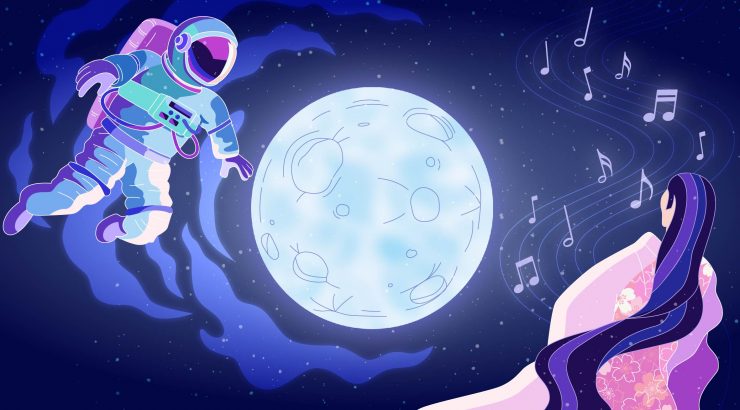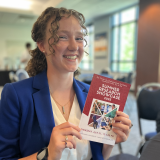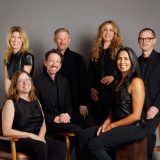
Opera Chapman Presents Celestial Visitors Something old, something new; it all revolves around the moon.
April 1, 2024
For spring 2024, Opera Chapman has brought together two one-act operas, blending the classical and the contemporary, all centered around the enigmatic allure of the moon. Titled “Celestial Visitors,” the production features Mozart’s Il sogno di Scipione and the west-coast premiere of Robert Moran’s From the Towers of the Moon.
A Futuristic Classic, a Traditional Contemporary
In Il sogno di Scipione, we journey to a dream world far above the earth where the protagonist, Scipione, encounters two goddesses, of which he must choose to follow throughout life. While Il sogno di Scipione is a classical-era opera, Opera Chapman has given it a retro-futurist setting, including commercial choreography from senior Chapman dance major Jean Park. With this being the 55th year since Americans first stepped foot on the moon, this version of Il sogno di Scipione tells the tale of a young woman who yearns to be an astronaut. As she drifts off to sleep, she wakes in a dream where she is met by the goddess Fortune (Fortuna) and goddess Constancy (Costanza). Each battles for Scipione’s attention with their armies of Fortuna-bots and Costanza-bots. In this dream, Scipione also meets her ancestors Publia, the first woman astronaut, and even Mozart herself! Each lectures her on her tasks on earth to achieve greatness. But which path will the confused and, at times, distracted Scipione choose? Will it be immediate fortune and fame, or long-term planning?
The second opera is based on the ancient Japanese fairy tale, The Tale of the Bamboo Cutter, where a goddess from the moon is sent to earth in human form to learn about life on earth. From the Towers of the Moon (1991) by Robert Moran is a contemporary opera, yet it is being approached with reverence for traditional Japanese theater, dance and costuming. The story follows Princess Kaguya, a goddess from the moon sent to earth in human form, who inadvertently teaches the world the meaning of love and protection.
The (Almost) Lost Opera
Director Marc Callahan explains the inspiration for choosing Robert Moran’s opera, “When I first came across this opera, it was through a transcendent aria filmed by PBS and four movements of a string quartet extracted from scenes of the opera. Given the subject matter of the work and my own experiences with traditional Japanese theater, I knew this would be the perfect companion piece for Opera Chapman to pair with Il sogno di Scipione.”
“However,” Callahan continued, “there was no published score or recording of the piece. Through many contacts, I reached out to the composer who graciously sent us the music scores that had been hiding away in his attic since the opera’s 1991 world premiere. With the help of Chapman music student Connor Low, who transcribed all the string parts, we had a completed version ready for performance, resurrecting what could have easily been a lost opera!”
Honoring Tradition
Callahan’s experience with Japanese theatre allowed him to build a unique team to produce something that honors and respects the culture. “Together with an incredible team of creative artists—Saori Mitome, David Murakami and Tesshi Nakagawa—we began to research the Heian Period to create the world of our show,” he said. “Meanwhile, our student cast had the opportunity to workshop with famed Nihon Buyo dancer and teacher Bandō Hidesomi to learn the basics of traditional Japanese dance, which you will see infused in the performance. As the director, I owe much to them and to my students’ hard work, but also to my sensei Bandō Hirohichirō, Noboyuki Ōe, Shingo Katayama, Tatsushige Udaka and Diego Pellechia.”
Music for the opera will be performed by The Chapman Orchestra under the baton of Danko Druško. The double-billed opera will be presented Friday, April 19 at 7:30 p.m. and Sunday, April 21 at 2:00 p.m. in the beautiful Musco Center for the Arts. Tickets are available at Chapman.edu/tickets-copa.
Illustration by Lisa Hisamura (’24), BFA Graphic Design

